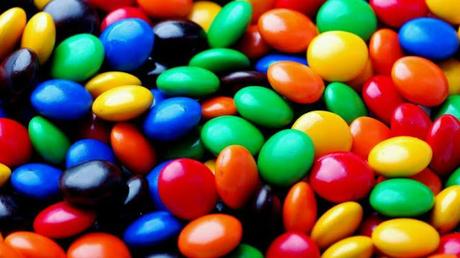That light bulb moment. It did actually sort of happen like that. But how did they arrive at that moment?
Forrest Mars was the son of the founder of the Mars Company. He wanted to innovate on his own rather than stay in his father's company. Forrest Mars Sr. moved to England, where in 1932 he began manufacturing the Mars bar for troops in the United Kingdom. It was during the Spanish Civil War that Mars purportedly encountered soldiers eating small chocolate beads encased in a hard sugar shell as part of their rations i.e. Smarties.Apart from the fact that chocolate smeared hands could be dangerous if handling a rifle there was, in an age when sales of chocolate typically dropped off during summer months due to the lack of air conditioning, the fact that they were not melting. Forrest was thrilled by the prospect of developing a product that would be able to resist melting in high temperatures. He returned to the United States and, shortly thereafter, approached Bruce Murrie, the son of Hershey executive William Murrie, to join him in his new business venture.Anticipating a shortage of chocolate and sugar as World War II raged on in Europe, Mars sought a partnership that would ensure a steady supply of resources to produce his new candy. In return, Murrie was given a 20 percent stake in the M&M product, which was named to represent ‘Mars’ and ‘Murrie.’
In case you were wondering, and these are the latest figures I found, an average batch of M&Ms is 30 percent browns, 20 percent each of yellows and reds, and 10 percent each of greens, oranges, and blues. I think I should now purchase a packet to check them out.It starts to get a bit confusing after that in terms of what adverts were used for what product. Treets were a brand of confectionery sold by Mars Limited in France, Germany, Belgium and the Netherlands. They appeared in the UK in the 1960s; these were later marketed as Peanut Treets (sold in a yellow packet), together with Toffee Treets (sold in a blue packet) and Chocolate Treets (sold in a brown packet).All three shared the same glazed coating, but the filling of the button-shaped Chocolate Treet consisted solely of the milk chocolate which surrounded the peanut or toffee pellet in the other versions. All three were marketed with the slogan ‘Melt in your mouth, not in your hand’.The brand was discontinued by Mars in 1988. Chocolate Treets had already been replaced with Minstrels. Peanut Treets were discontinued in favour of the multi-coloured Peanut M&M's.I’m going a bit off piste here but I found it fascinating that astronauts apparently love them because things taste different in outer space. As foods taste blander, the astronauts prefer stronger flavours that include spices and sugar. M&M’s are also compact and self-contained so there’s no chance of biting one in half and creating stray crumbs. And if one or two do go floating away, because they’re brightly coloured, they’re easier to find.
The poem to accompany this article has nothing to do with chocolate and everything to do with the chance to mention my new pamphlet ‘Notes on the Causes of The Third World War’ which is available from Indigo Dreams Publishing.

This poem can be found on page 9:
A Present from the Past
There is a Professor of Glaciology
at this University
who starts her first lecture
to a fresh intake of students thus:
Lock the door and don’t move.
I mean it.
This stuff melts, even here,
I’d hate to see your grants cancelled.
And then she slowly,
some may say dramatically,
removes insulation
from a long slim column of ice
drilled from a glacier
that once covered
where these words are being written.
She’s told me,
many times,
that the most common question
in the Refectory later
is why those cores
were ignored.
Thanks for reading, Terry
Editor's Note: Terry's excellent pamphlet is available to order here: Terry Quinn Pamphlet Email ThisBlogThis!Share to TwitterShare to Facebook
